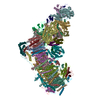+Search query
-Structure paper
| Title | Cryo-electron microscopy reveals how acetogenins inhibit mitochondrial respiratory complex I. |
|---|---|
| Journal, issue, pages | J Biol Chem, Vol. 298, Issue 3, Page 101602, Year 2022 |
| Publish date | Jan 19, 2022 |
 Authors Authors | Daniel N Grba / James N Blaza / Hannah R Bridges / Ahmed-Noor A Agip / Zhan Yin / Masatoshi Murai / Hideto Miyoshi / Judy Hirst /   |
| PubMed Abstract | Mitochondrial complex I (NADH:ubiquinone oxidoreductase), a crucial enzyme in energy metabolism, captures the redox potential energy from NADH oxidation/ubiquinone reduction to create the proton ...Mitochondrial complex I (NADH:ubiquinone oxidoreductase), a crucial enzyme in energy metabolism, captures the redox potential energy from NADH oxidation/ubiquinone reduction to create the proton motive force used to drive ATP synthesis in oxidative phosphorylation. High-resolution single-particle electron cryo-EM analyses have provided detailed structural knowledge of the catalytic machinery of complex I, but not of the molecular principles of its energy transduction mechanism. Although ubiquinone is considered to bind in a long channel at the interface of the membrane-embedded and hydrophilic domains, with channel residues likely involved in coupling substrate reduction to proton translocation, no structures with the channel fully occupied have yet been described. Here, we report the structure (determined by cryo-EM) of mouse complex I with a tight-binding natural product acetogenin inhibitor, which resembles the native substrate, bound along the full length of the expected ubiquinone-binding channel. Our structure reveals the mode of acetogenin binding and the molecular basis for structure-activity relationships within the acetogenin family. It also shows that acetogenins are such potent inhibitors because they are highly hydrophobic molecules that contain two specific hydrophilic moieties spaced to lock into two hydrophilic regions of the otherwise hydrophobic channel. The central hydrophilic section of the channel does not favor binding of the isoprenoid chain when the native substrate is fully bound but stabilizes the ubiquinone/ubiquinol headgroup as it transits to/from the active site. Therefore, the amphipathic nature of the channel supports both tight binding of the amphipathic inhibitor and rapid exchange of the ubiquinone/ubiquinol substrate and product. |
 External links External links |  J Biol Chem / J Biol Chem /  PubMed:35063503 / PubMed:35063503 /  PubMed Central PubMed Central |
| Methods | EM (single particle) |
| Resolution | 3.4 Å |
| Structure data | EMDB-13611, PDB-7psa: |
| Chemicals | 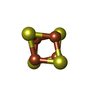 ChemComp-SF4: 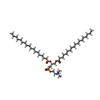 ChemComp-PC1: 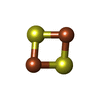 ChemComp-FES:  ChemComp-FMN: 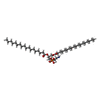 ChemComp-3PE: 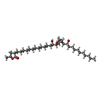 ChemComp-88I: 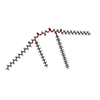 ChemComp-CDL:  ChemComp-ATP: 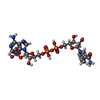 ChemComp-NDP:  ChemComp-ZN:  ChemComp-EHZ: |
| Source |
|
 Keywords Keywords | MEMBRANE PROTEIN / inhibitor-bound / detergent-solubilised / NADH:Ubiquinone oxidoreductase |
 Movie
Movie Controller
Controller Structure viewers
Structure viewers About Yorodumi Papers
About Yorodumi Papers




